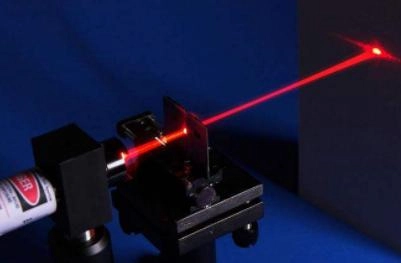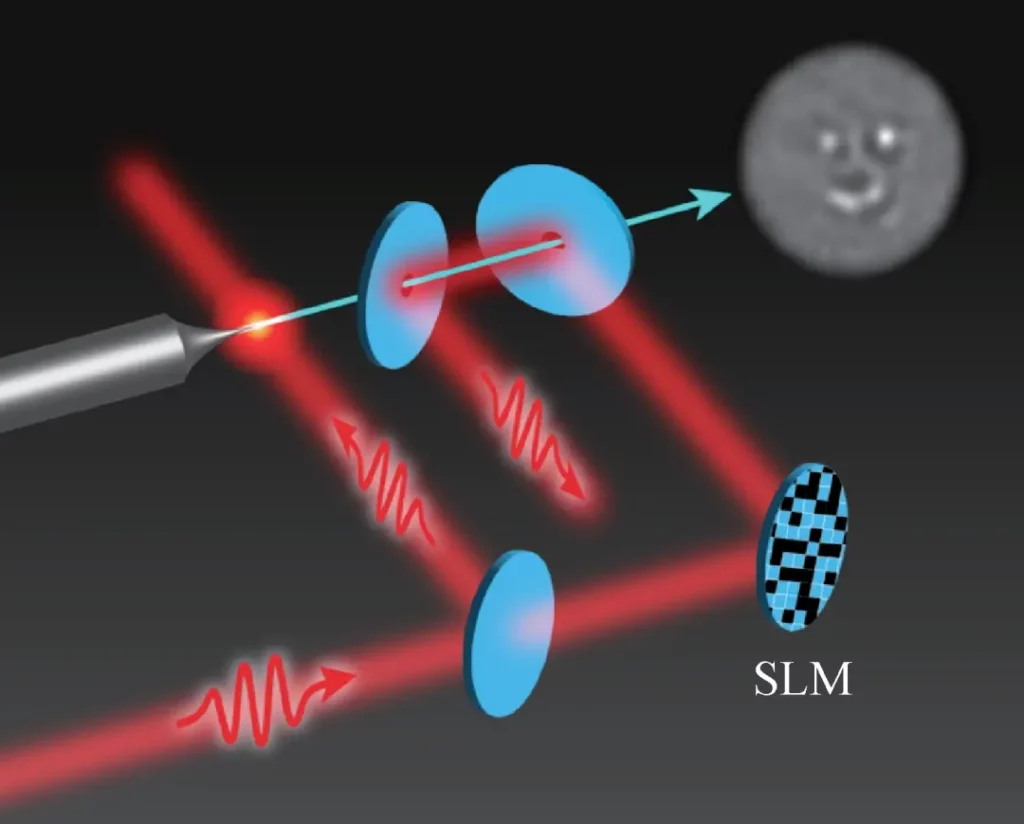Introduction
We live in an era where technological advancements shape our daily lives, and in the midst of these marvels, laser modulation technology stands out as a cornerstone. This transformative technology, often underrated, has diverse applications ranging from telecommunications to medicine. Here, we will delve into the different modulation techniques of lasers and understand how they play a pivotal role across various sectors.
Understanding Laser Modulation Techniques
In today’s rapidly advancing technological world, lasers have become instrumental in various applications. The capacity to modulate lasers, adjusting their properties to suit different tasks, has considerably widened their scope. Grasping these modulation techniques is pivotal for anyone looking to harness the power of lasers effectively.

Amplitude Modulation (AM)
At its core, amplitude modulation (AM) of lasers is about altering the immediate power level or amplitude of the light wave. While it may seem elementary, this technique is deeply entrenched in the world of fiber-optic communication systems. Why? Primarily, AM stands out due to its straightforward approach, coupled with its effectiveness. By adjusting the laser’s amplitude in tandem with the input signal, one can achieve impeccable optical communication. This is especially evident in long-distance telecommunication networks where clarity and reliability are paramount.
Frequency Modulation (FM)
Frequency modulation (FM) takes a different approach. Instead of playing with power levels, FM perturbs the frequency of the laser light wave according to the input signal. The primary advantage of FM over AM is its heightened resistance to noise. In scenarios where precision is non-negotiable, FM emerges as the frontrunner. Its immunity to noise disturbances makes it a darling in fields like astronomical research, medical imaging, and high-precision manufacturing.
Phase Modulation (PM)
Phase modulation (PM) is a subtle yet potent technique that zeroes in on the phase angle of the laser wave. While it shares semblances with FM, PM carves out its niche, especially in the burgeoning domain of quantum communication systems. As quantum technology gains traction, PM’s ability to influence the phase angle of a laser wave will only grow in importance. This makes it indispensable in tasks such as quantum key distribution and quantum computing, where data security and computational speed are vital.
Pulse Width Modulation (PWM)
Pulse Width Modulation, often abbreviated as PWM, is all about the pulse. Specifically, it concerns altering the pulse’s duration. The real-world implications of PWM are vast, especially in areas where conserving energy isn’t just desirable but essential. Take, for instance, laser welding and metal cutting. These processes require immense energy, and even minor inefficiencies can lead to significant wastages. By leveraging PWM, professionals can optimize the pulse duration of the laser to achieve maximum efficiency, ensuring that every burst of energy is utilized to its fullest.
Polarization Modulation
Last but certainly not least, we have polarization modulation. This technique dives deep into the realm of physics, focusing on changing the orientation or polarization of the laser light wave. Polarization modulation might sound esoteric, but it’s a lynchpin in advanced optical sensing and imaging applications. By modulating a laser’s polarization, scientists and engineers can glean deeper insights, whether they’re peering into the intricacies of a biological cell or gauging the health of ecosystems from space.
In summary, as lasers continue to influence various sectors, understanding their modulation techniques becomes indispensable. Whether it’s the simplicity of AM or the precision of FM, each modulation method offers unique advantages tailored for specific applications.
Impact of Laser Modulation Techniques on Output Characteristics
Influence on Power Distribution
The realm of laser modulation is complex, yet its understanding is pivotal for professionals aiming to harness lasers to their fullest potential. At the heart of this domain lies the impact of modulation on power distribution. Laser modulation, while enabling enhanced control over laser attributes, presents challenges in managing the power distribution of the output beam. When one employs amplitude modulation, for instance, it can lead to fluctuations in output power. This variability can have ramifications, especially in applications that demand consistent power outputs. On the other hand, when delving into frequency and phase modulations, one treads into the territory of altering the spectral distribution. Such shifts can have implications, particularly in fields like spectroscopy or communications where spectral attributes are of utmost importance.
Beam Quality and Stability
Moving beyond power, the quality and stability of the laser beam are paramount for precision tasks. Modulation techniques, notably Pulse Width Modulation (PWM), can introduce both enhancements and challenges in this regard. When we speak of high-frequency modulations, for instance, while they offer refined control, they also come with the potential downside of inducing beam instabilities. Such instabilities can be detrimental in precision applications like microfabrication or medical surgeries, where a stable beam can mean the difference between success and failure.
Modulation Depth and Efficiency
Efficiency isn’t just a buzzword; it’s the linchpin of modern technological applications. Within the sphere of laser modulation, achieving the right balance between modulation depth and efficiency is vital. Both amplitude and phase modulations, with their innate characteristics, tend to offer greater modulation depth.

Such depths, in layman terms, provide a broader range of control over the laser’s attributes. When one can achieve this without a significant energy trade-off, it translates to higher efficiency. This balance makes amplitude and phase modulations particularly enticing in applications where energy conservation and output control are both critical.
In a nutshell, laser modulation, while offering a plethora of controls and refinements over laser outputs, demands a deep understanding of its implications on power distribution, beam quality, and efficiency. For professionals navigating this space, being cognizant of these nuances can be the key to unlocking the full potential of lasers in their respective fields.
Diverse Applications of Laser Modulation Techniques
Communications
Diving deep into the realm of communications, particularly optical fiber communications, the pivotal role of modulation techniques becomes evident. Techniques like Amplitude Modulation (AM) and Frequency Modulation (FM) stand out as the backbone of modern optical communications. In a world that craves faster and more reliable data transmission, these techniques answer the call. AM, by varying the strength (amplitude) of the optical signal, offers a straightforward way of encoding data.

FM, on the other hand, shifts the frequency of the optical signal according to the information being transmitted. The beauty of these modulation techniques lies in their capacity to transmit data over expansive distances with minimal loss. This efficiency translates to clearer voice calls, faster internet browsing, and interruption-free streaming, bridging gaps and connecting the world in real-time.
Medicine
Venturing into the medical field, the transformation brought about by laser modulation is nothing short of revolutionary. The precision and control offered by techniques like Pulse Width Modulation (PWM) and amplitude modulation have reshaped the landscape of medical diagnostics and treatments.

Advanced medical imaging, a critical tool in early diagnosis and monitoring of diseases, owes much of its progress to PWM. This modulation technique, by adjusting the duration of laser pulses, allows for sharper, more detailed imaging, helping clinicians make informed decisions. Likewise, in the realm of surgical procedures, amplitude modulation stands out. By finely adjusting the laser’s power output, surgeons can perform intricate operations with utmost precision, minimizing collateral damage and enhancing patient recovery times.
Scientific Research
The world of scientific research, always at the forefront of innovation, harnesses the power of laser modulation to unravel mysteries at the microscopic level. Researchers, in their quest to understand and manipulate the infinitesimally small, employ laser modulation techniques to their advantage. Polarization modulation, in particular, plays a starring role.

By altering the orientation of the laser light wave, scientists can delve deep into studying the properties of crystals, minerals, and a plethora of other materials. This technique has been instrumental in uncovering properties like refractive indices, internal structures, and stress distributions in materials. As a result, fields ranging from material science to geology and even biology have witnessed groundbreaking discoveries, all thanks to the intricate dance of light manipulation through laser modulation.
Conclusion
Laser modulation technology, with its diverse techniques, has permeated various sectors, driving innovations and efficiencies. From enabling high-speed communication channels to advancing medical procedures, the importance of understanding and harnessing these modulation techniques cannot be overstated.
Frequently Asked Questions (FAQs)
- 1. Which laser modulation technique is most prevalent in fiber-optic communications? Amplitude modulation is commonly employed due to its simplicity and effectiveness.
- 2. How does frequency modulation improve noise immunity? FM is less susceptible to amplitude noise, providing better immunity against external interferences.
- 3. Are there any drawbacks to using high-frequency pulse width modulation? Yes, high-frequency PWM can lead to beam instabilities, affecting the precision of some applications.
- 4. Why is polarization modulation crucial in scientific research? Polarization modulation aids in studying the properties of specific materials, like crystals, by modifying the orientation of the laser light wave.
- 5. Can phase and frequency modulations be used interchangeably? While intrinsically linked, they offer different benefits. The choice between them depends on the specific application requirements.

Frank
Frank graduated from the University of Shanghai for Science and Technology, majoring in optics. As a technical engineer at Crylink Company, he deeply understands crystal materials and laser components.
Related Video(s) with this Article
Related Product(s) with this Article
Related Application(s) with this Article
